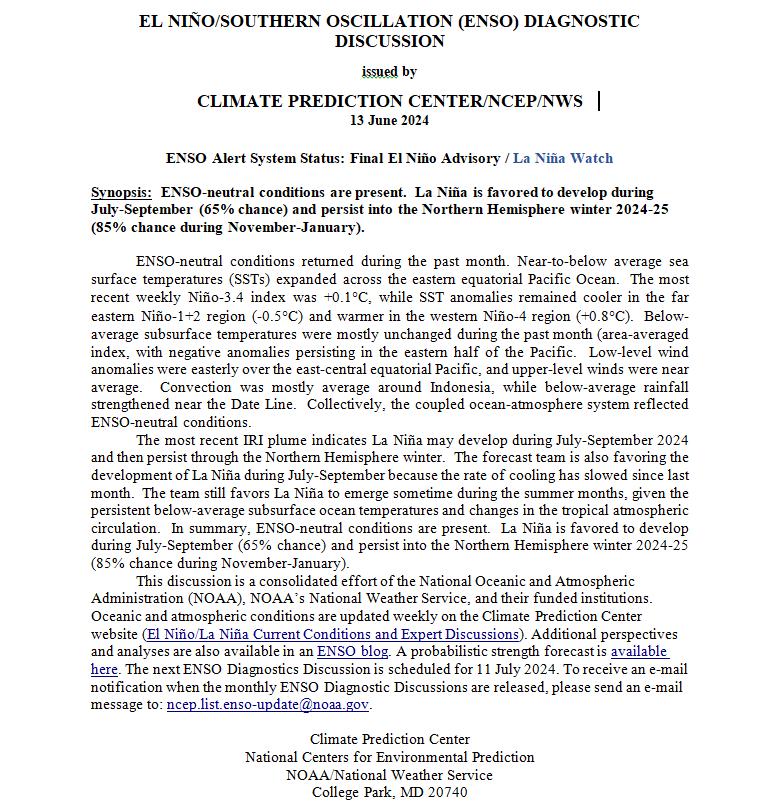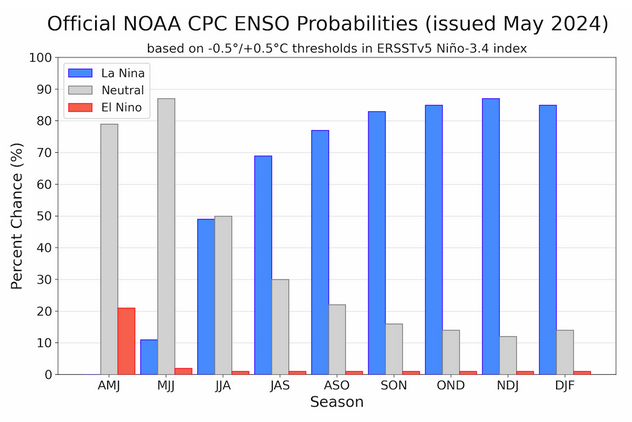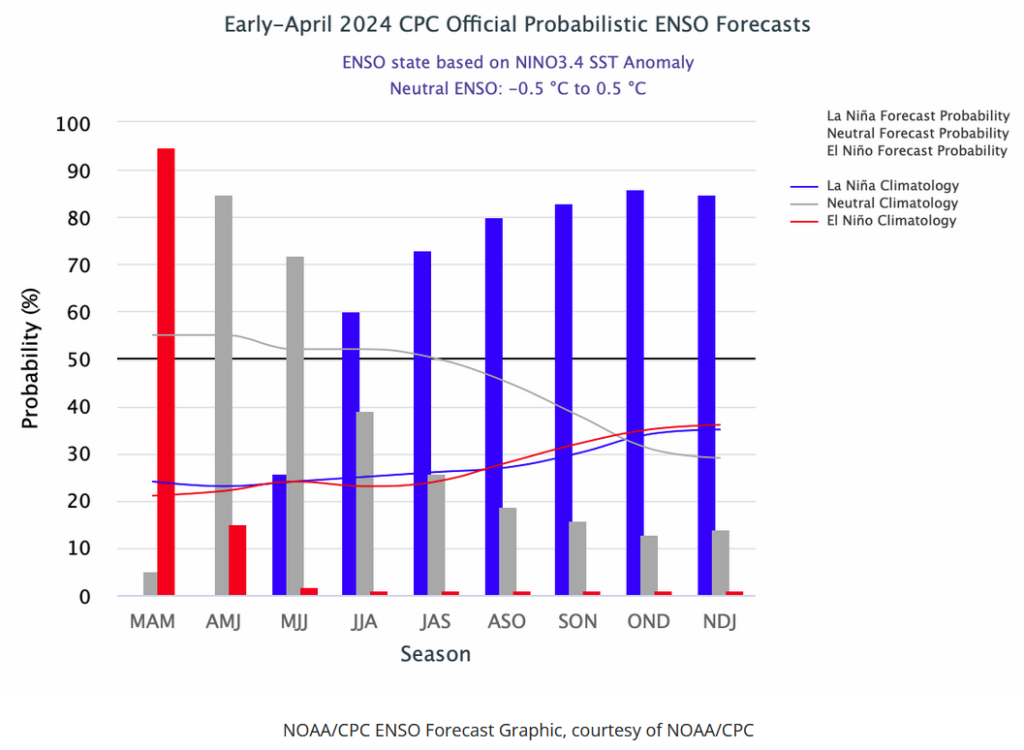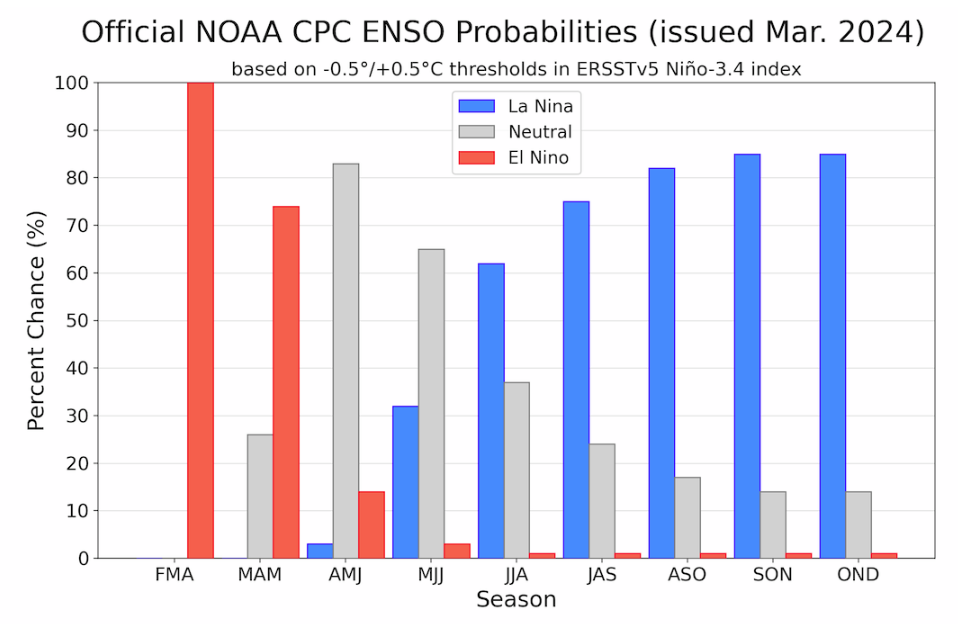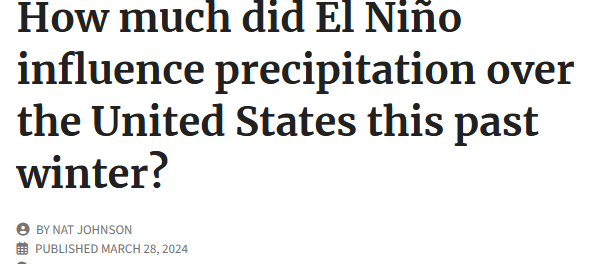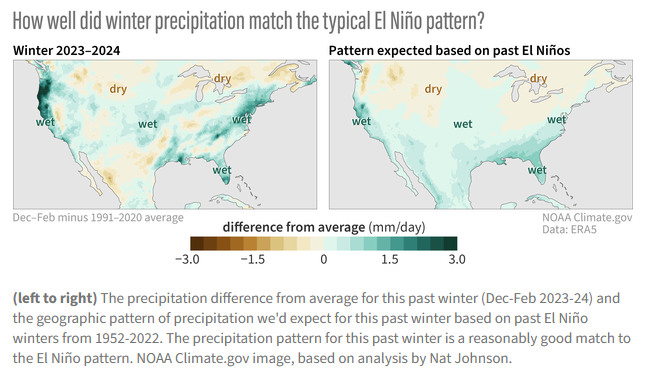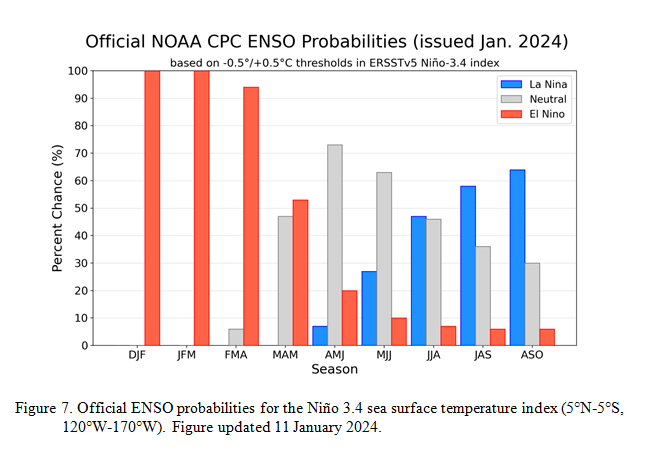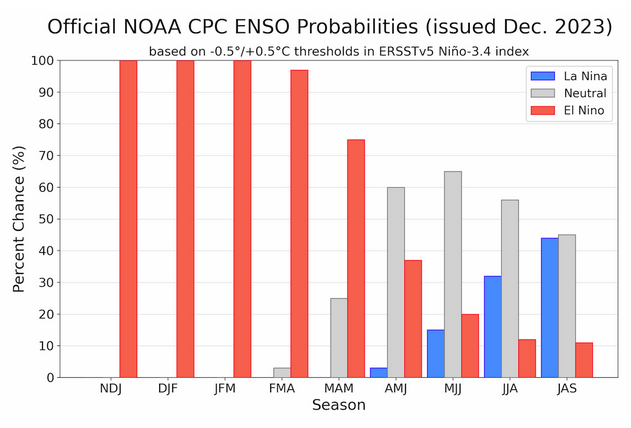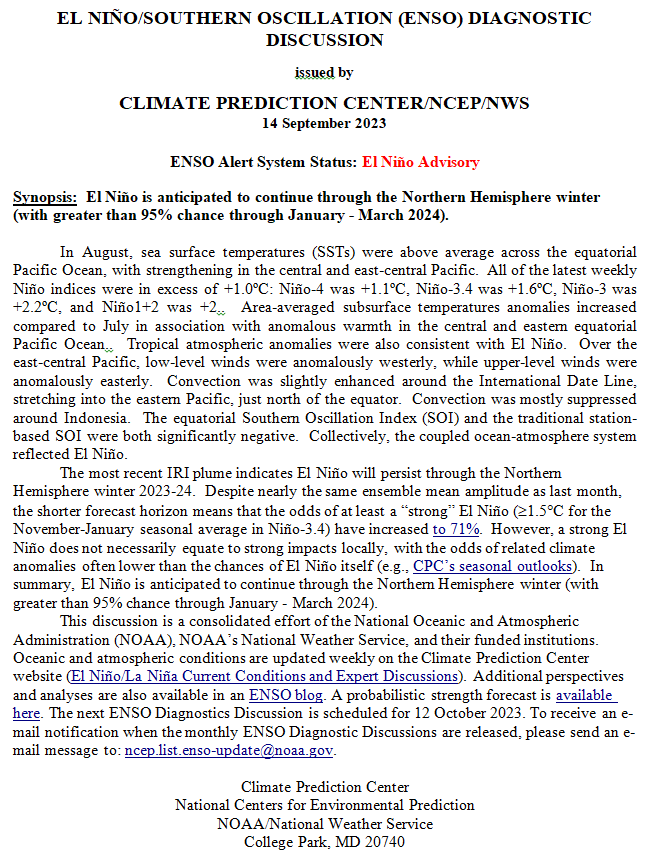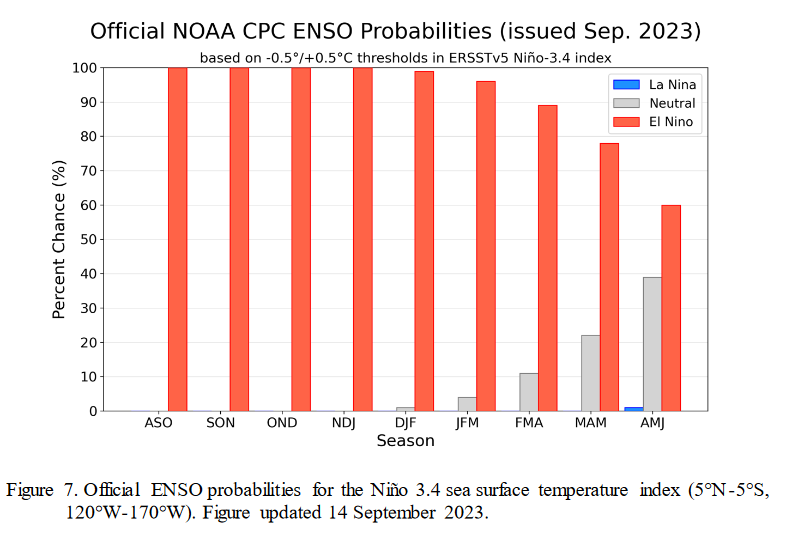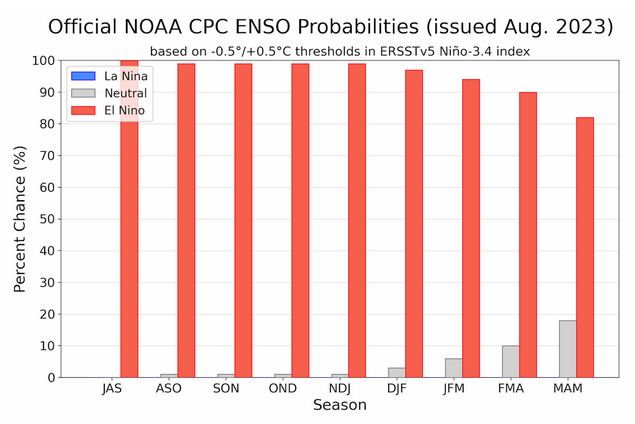NOAA Updates its ENSO Alert on July 11, 2024 – We are Now in La Nina Watch but the Expected Arrival Date has Been Delayed. – Published July 13, 2024
“Synopsis: ENSO-neutral is expected to continue for the next several months, with La Niña favored to emerge during August-October (70% chance) and persist into the Northern Hemisphere winter 2024-25 (79% chance during November-January).”
So we are really in ENSO Neutral but NOAA may not want to admit their forecast was wrong so they present it this way. It is correct that we are in La Nina Watch but it is also correct that we currently remain in ENSO Neutral..
On the second Thursday of every month, NOAA (really their Climate Prediction Center CPC) issues its analysis of the status of ENSO. This includes determining the Alert System Status. NOAA now describes their conclusion as “ENSO Alert System Status: La Nino Watch”
The exact timing of the transition is now less clear which should decrease the reliability of the Seasonal Outlook to be issued next Thursday.
We have included an ENSO Blog article by Emily Becker.
 >
>
CLIMATE PREDICTION CENTER ENSO DISCUSSION
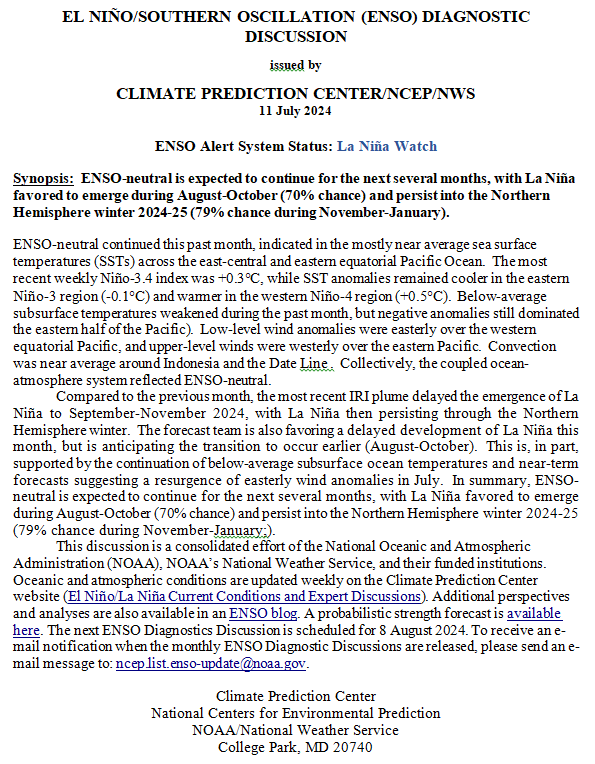
| The second paragraph is what is important:
“Compared to the previous month, the most recent IRI plume delayed the emergence of La Niña to September-November 2024, with La Niña then persisting through the Northern Hemisphere winter. The forecast team is also favoring a delayed development of La Niña this month, but is anticipating the transition to occur earlier (August-October). This is, in part, supported by the continuation of below-average subsurface ocean temperatures and near-term forecasts suggesting a resurgence of easterly wind anomalies in July. In summary, ENSO-neutral is expected to continue for the next several months, with La Niña favored to emerge during August-October (70% chance) and persist into the Northern Hemisphere winter 2024-25 (79% chance during November-January).” Below is the middle paragraph from the discussion last month. “The most recent IRI plume indicates La Niña may develop during July-September 2024 and then persist through the Northern Hemisphere winter. The forecast team is also favoring the development of La Niña during July-September because the rate of cooling has slowed since last month. The team still favors La Niña to emerge sometime during the summer months, given the persistent below-average subsurface ocean temperatures and changes in the tropical atmospheric circulation. In summary, ENSO-neutral conditions are present. La Niña is favored to develop during July-September (65% chance) and persist into the Northern Hemisphere winter 2024-25 (85% chance during November-January; “ |
We now provide additional details.
CPC Probability Distribution
Here are the new forecast probabilities. The probabilities are for three-month periods e.g. JJA stands for June/July/August.
Here is the current release of the probabilities:
| This chart shows the forecast progression of the evolution of ENSO from the current El Nino State to Neutral and by the summer to La Nina. This kind of bar chart is not very good at showing uncertainty. |
Here is the forecast from last month.
| The analysis this month and last month are a bit different with again the transition to La Nina being slower than thought last month. This seems to be a trend. I am not sure that we will actually have a La Nina. |


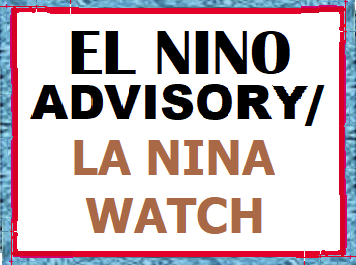 >
>